The Long History Of Fast Reactors And The Promise Of A Closed Fuel Cycle
The discovery of nuclear fission in the 1930s brought with it first the threat of nuclear annihilation by nuclear weapons in the 1940s, followed by the promise of clean, plentiful power in the 1950s courtesy of nuclear power plants. These would replace other types of thermal plants with one that would produce no exhaust gases, no fly ash and require only occasional refueling using uranium and other fissile fuels that can be found practically everywhere.
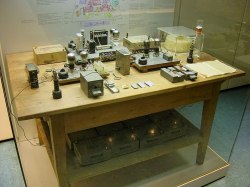
As nuclear reactors popped up ever faster during the 1950s and 1960s, the worry about running out of uranium fuel became ever more present, which led to increased R&D in so-called fast reactors, which in the fast-breeder reactor (FBR) configuration can use uranium fuel significantly more efficiently by using fast neutrons to change (‘breed’) 238U into 239Pu, which can then be mixed with uranium fuel to create (MOX) fuel for slow-neutron reactors, allowing not 1% but up to 60% of the energy in uranium to be used in a once-through cycle.
The boom in uranium supplies discovered during the 1970s mostly put a stop to these R&D efforts, with some nations like France still going through its Rapsodie, Phénix and SuperPhénix designs until recently finally canceling the Generation IV ASTRID demonstrator design after years of trying to get the project off the ground.
This is not the end of fast reactors, however. In this article we’ll look at how these marvels of engineering work and the various fast reactor types in use and under development by nations like Russia, China and India.
The ‘fast’ part of fast reactors
As alluded to in the introduction, the speed of the neutrons in their fission process is what makes a “fast” reactor fast. Whereas light-water reactors (LWR: including PWR, BWR and SCWR) employ regular water as a neutron moderator, fast reactors do not. The neutrons that are emitted by 235U and other isotopes when they are subjected to a nuclear chain reaction normally travel at a significant speed. Interestingly enough, the speed at which a neutron travels determines the likelihood of it interacting with a specific nucleus.
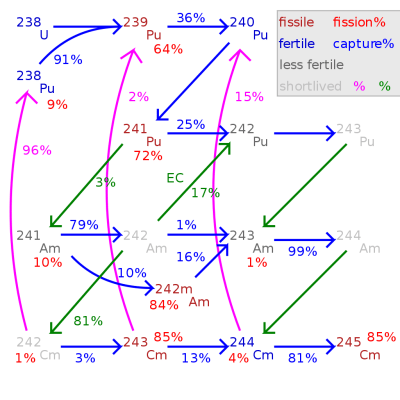
This neutron cross-section property is used to categorize nuclides. When a nucleus absorbs a neutron and either keeps it or decays, it is said to have a capture cross section. Nuclides that fission (shatter) have a fission cross section. Other nuclides will simply scatter the neutron and are said to have a scatter cross section. Nuclides with large absorption cross sections are called neutron poisons, as they will simply absorb neutrons without decaying, essentially starving the nuclear reaction of neutrons.
A nuclide like that of 238U is interesting in that has a non-zero rating in each of those three cross-section categories, which at least partially explains why it makes for such a poor fuel for a LWR. This is quite unlike 235U, which has a solid fission cross section, but only at neutron speeds which are significantly lower than those of freshly emitted neutrons during the nuclear chain reaction. This means that the neutrons in a LWR have to be slowed down (reduced to ‘thermal’ speeds) for a fission process to be sustained.
Here the water finds itself amidst the fuel rods, with neutrons flying everywhere as the fission process has been kick-started by the startup neutron source. These fast neutrons readily collide with the hydrogen atoms in a water molecule, which causes the former to lose kinetic energy and as a result slow down. This allows them to then careen straight into another (or the same) fuel rod and successfully fission another 235U nuclide.
This property of water as moderator also acts as a safety feature. If the temperature in the core increases, the water will end up boiling, which causes it to turn into a gas, meaning fewer water molecules per volume and thus less moderating of neutrons, effectively reducing the rate of the nuclear chain reaction. This negative void coefficient is a common feature of all commercial reactors in use today, with noticeable exceptions being the infamous RBMK design and the heavy water-based Canadian CANDU reactors.
Breeding plutonium for fun and profit
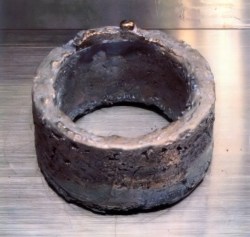
As mentioned earlier, 238U is a bit of an odd one when it comes to its neutron cross-section. Its triple-dipping means that it both absorbs and scatters neutrons in addition to the occasional fission event, with the former being significantly more prevalent. Upon capturing a neutron by a 238U nuclide, it transforms (transmutates) into 239Pu (and some 239Pu into 240Pu). This process also happens in an LWR reactor, but is done on purpose in a fast breeder reactor (FBR) to create plutonium.
A fast reactor omits the neutron moderator completely, as it requires the fast neutrons in order to convert as much of the 238U to 239Pu. In the FBR, an enriched 235U core is covered with a mantel of mostly 238U, which then slowly transmutates into mostly 239Pu and 240Pu, for use in MOX fuel. This means that the FBR is a relatively simple design, using either a cooling loop or pool design. Coolants used are generally a liquid metal or sodium-based coolant, as these are weak neutron moderators, while still possessing excellent heat transfer properties.
France’s fast reactors have been used to both generate electricity just like any other thermal plant, while also providing the plutonium needed for creating MOX fuel that can be used in its LWRs. A major reason for this process was energy independence, as France does not have significant uranium resources, this would have allowed it to obtain up to sixty times more energy out of the uranium it imports, allowing every kilogram of uranium to last sixty times as long.
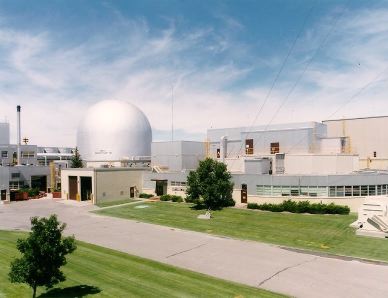
Other recent efforts involving fast reactors include the Integral Fast Reactor in the USA and Japan’s Monju (succeeded by the FNR Jouyou sodium-cooled fast reactor). A nice side-effect of breeding uranium fuel is that it significantly reduces the volume of the spent fuel at the end of a once-through fuel cycle, as much of the original 238U will have been burned as 239Pu fuel in the LWR. The spent fuel from LWRs can then be passed through an FBR again, to burn up ‘waste’ isotopes which LWRs cannot use, as well as to create more fuel for LWRs.
Unfortunately, fast reactors have the disadvantages of being more expensive than LWRs and the challenges of sodium-based cooling (mainly avoiding contact with water) have meant that since the 1970s crash in uranium prices, it’s generally more economically viable to create new fuel out of uranium ore and store or dump the spent fuel after a once-through run in an LWR.
Despite an LWR doing some breeding of its own, converting some of the 238U to plutonium, an LWR’s spent fuel still contains about 96% of the original uranium along with 3% of ‘waste’ isotopes and about 1% of plutonium isotopes.
Burn, baby, burn
While most fast reactors are used to breed fuel for LWRs, another type aims to use all of the fuel locally. This type of fast reactor is called a Fast-Neutron Reactor (FNR) and is essentially a different core configuration of the FBR design, with no fundamental differences. Any fast reactor can in theory be used to breed fuel and burn it.
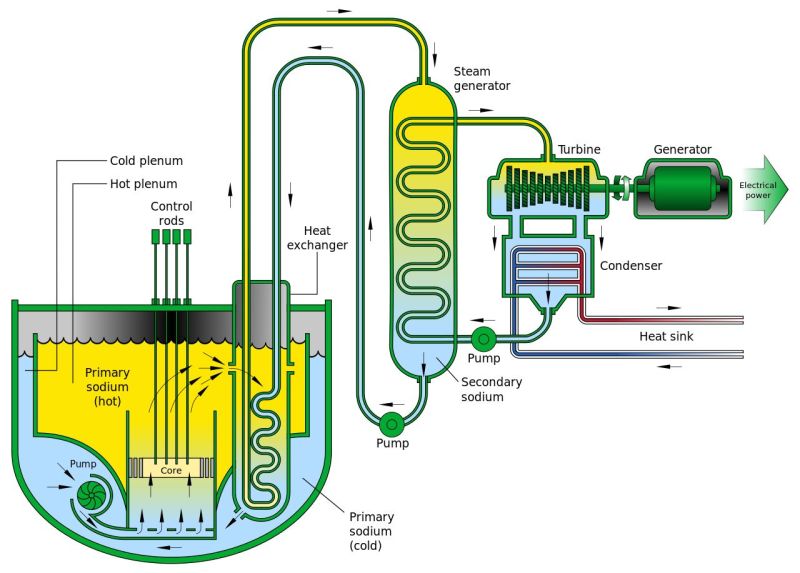
Changing an FBR design to FNR involves removing the 238U blanket and installing stainless steel (or equivalent) neutron reflectors. In the resulting reactor, the produced neutrons are kept inside the core, keeping them available for new interactions with nuclides and continuing the fission process.
As a result, an FNR can effectively fission and transmutate the nuclides in the fuel until no significant amounts of actinides (which includes uranium and plutonium) remain. This can be combined with pyroprocessing, which can reprocess today’s spent fuel from LWRs for burn-up in FNRs, effectively closing the nuclear fuel cycle.
French Resistance
Not only cold economics have played a role in stifling fast reactor development in the West. Fast reactors have caught the attention of terrorists and politicians alike. The former is illustrated by the 1982 rocket attack by Chaïm Nissim on the Superphénix FBR with five RPG-7 shoulder-fired rocket-propelled grenades, as he believed that an FBR “can explode with their fast neutrons”. This particular FBR was a joint project between France, Italy and Germany, with originally the goal to build FBRs based on the Superphénix design in both France and Germany.
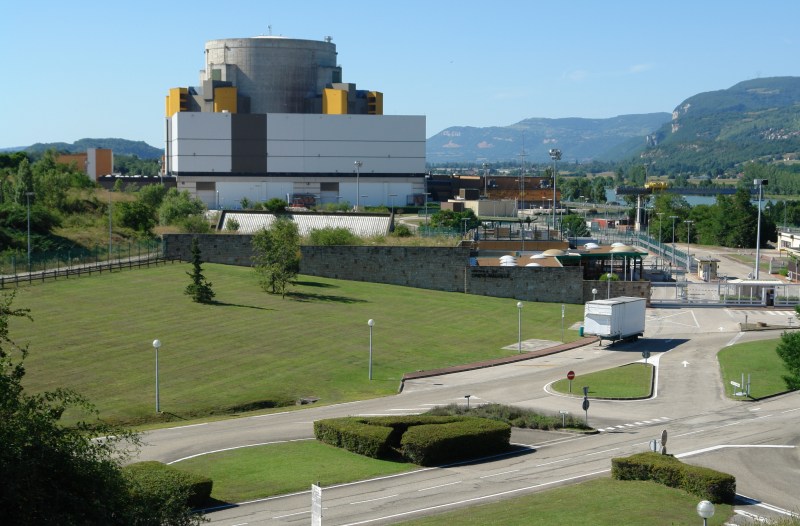
From the beginning the Superphénix faced strong political resistance by anti-nuclear groups, with the closure of this prototype reactor in 1998, at a time when anti-nuclear Green ministers were in charge of the French government. The only reason given was that the project wasn’t viable due to its ‘excessive costs’, being 9.1 billion Euro since 1976, or about 430 million Euro a year. This despite the reactor’s issues with the sodium loop having been resolved in 1996 and the reactor having made money by producing electricity during most of its operational lifespan.
Current development
The situation in the US, France and other Western countries contrasts sharply with that in the Soviet Union, China and India. Starting in 1973, the BN-350 FNR on the shores of the Caspian Sea in what is now Kazakhstan provided 135 MW of electricity and desalinated water to the nearby city of Aktau. It only shut down in 1994 because the operator had run out of funds to purchase more fuel. In 1999 the reactor was fully retired, after 26 years of service.
The BN-series of FNRs continued with the BN-600, which was constructed at Beloyarsk Nuclear Power Station in Russia. This uses a sodium pool-based design and has been in operation since 1980, providing 600 MW of power to the local grid. Despite suffering a few dozen minor issues mostly related to leaks in the sodium tubing, its operational history has been largely trouble-free despite being the second prototype in the BN-series.

The BN-800 reactor, built at the same Beloyarsk site, is the final prototype in the BN-series, providing 85% reduction in operating costs over the LWR VVER-1200 reactor, with the BN-1200 intended to be the first mass-produced fast reactor. Construction of the first BN-1200 reactors is currently pending. China’s experimental CEFR FNR and CFR-600 pilot FNR are based on Russian BN-reactor technology. Russia is also working on a lead-cooled fast reactor, called BREST.
India has found itself with abundant thorium (232Th) resources, which has led to it focusing on an ambitious thorium-based development program alongside uranium reactors. The thorium program consists out of three parts. First, they produce plutonium from uranium using LWRs. Then a FNR creates 233U from 232Th while burning the plutonium. Finally, advanced heavy water reactors would use the resulting thorium as fuel, and the 233U and plutonium as driver fuels.
Other Generation IV FNR designs are also under development, such as the helium gas-cooled fast reactor (GFR).
Closing the fuel cycle
As mentioned earlier, FNRs are capable of using all of today’s spent fuel (often referred to as ‘nuclear waste’) as fuel. Combined with pyropocessing, this would allow for nuclear fission reactors to operate with practically zero waste, using up all uranium fuel, minor actinides and so on. This has been a major goal of Russia’s nuclear program, and is one of China’s, Japan’s and South Korea’s nuclear programs as well.
Along with efforts in the US (mostly Argonne National Laboratory and its IFR pyroprocessing), South Korea’s KAERI is actively working on closing South Korea’s fuel cycle. The goal is to separate the spent fuel from everything that is still viable as fuel, meaning everything that is still radioactive. Unfortunately cooperation between Russia and nations other than China, as well as between South Korea and Japan or China has been very limited on this type of research on mostly political grounds.
Despite this, it seems that efforts are well underway to make Generation IV FNRs the reactor of choice for new plants, not only allowing for spent fuel to be used up fully and closing the fuel cycle, but also increasing the energy we can obtain from uranium (and conceivably thorium) by many times, increasing even the pessimistic estimate of about 100 years of uranium fuel to a comfortable few-thousand years, while not leaving the world a legacy of spent uranium fuel.


Comments are closed.